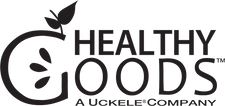If you see a product with a "skull and crossbones" or "danger" written on it, you know not to apply it to your skin or eat it, and for good reason – it contains toxins. Yet, many skin care products use ingredients with unrecognizable and unpronounceable names, which are possibly dangerous, but we don’t get any warnings. So...are there ingredients in hair care to avoid? Yes, and after reading this, you may find it's time for a bathroom detox.
Xenoestrogens in Shampoo
Personally, I do anything I can to avoid putting unrecognizable ingredients on my skin, and if I don't know what an ingredient is, I look it up on the Environmental Working Group's Skin Deep Cosmetics Database. I became neurotic about this when I was pregnant because I didn’t want those toxins passed through to my baby, which definitely happens and is a big concern. Here are ten ways, aside from vetting your shampoo, to decrease your toxic exposure during pregnancy.
Some of the toxins in shampoo are known as xenoestrogens and are some of the biggest health disruptors a person can encounter. Xenoestrogens mimic the hormone estrogen, the primary female sex hormone. As a result, xenoestrogens directly interfere with hormone signaling. This interference contributes to an increasing number of health issues such as cancer, fertility problems, slow cognitive development, changes in metabolism, and immune disorders. It is well-proven when you apply chemicals to your skin, they enter your bloodstream and become integrated into your body tissues. When you're dealing with some carcinogenic chemicals, this certainly isn’t desirable.
Here are five ingredients in Shampoo I recommend avoiding and why.
1. Sodium Laureth Sulfate (SLS)
It’s found in almost every popular brand of shampoo because it is a cleaning agent and causes the foam we all like when shampooing our hair. On the contrary, SLS is known to be a skin and eye irritant and is classified as a moderate concern for organ system toxicity. To make matters worse, the real problem with SLS is the manufacturing process (ethoxylation) results in SLS being contaminated with 1,4 dioxane, a known breast carcinogen.
2. Propylparaben and the entire Paraben family
It's estimated that 75 to 90% of cosmetics contain parabens, and once you start looking for them on the shampoo ingredients label, you'll be shocked how prevalant they are. Propylparaben is just one of many parabens derivatives. Other parabens you'll see on cosmetic labels include: methylparaben, ethylparaben, butylparaben, and isobutylparaben.
Parabens are a known estrogen-mimicker and act exactly like estrogen in the body. When estrogen levels are in excess, it can increase lower-body fat, stubborn cellulite, PMS, endometriosis, ovarian cysts and more. It’s certainly not something you want too much of. If you’re not selective about the products you put on your body, you may be throwing off the delicate balance of hormones by adding more estrogen to the equation.
Women aren’t the only ones that need to worry about the presence of parabens because they can also interfere with male reproductive functions.
3. Retinyl Palmitate (Vitamin A Palmitate)
When exposed to UV light, retinol compounds break down and produce toxic free radicals that can damage DNA and cause gene mutations, a precursor to cancer. Recently available data from an FDA study indicate when retinyl palmitate is applied to the skin in the presence of sunlight, it may speed the development of skin tumors and lesions. FDA also raised a concern that extensive, daily application of skin creams with vitamin A may build up to a high enough level in a woman’s body to be toxic to her developing fetus.
4. Formaldehyde Releaser
Used as an embalming agent for the deceased before burial, it’s commonly found in shampoo! It can cause an allergic reactions and damage to the nervous system. Formaldehyde, however, it isn't always found listed as its traditional name. It can be found on ingredient labels as DMDM Hydantoin, Diazolidinyl Urea, and Quarternium-15, to name only a few. A study published in Journal of Occupational and Environmental Medicine found that occupational exposure to formaldehyde was linked to reduced fertility in 300 men who worked at a wood-processing factory. Formaldehyde exposure was also associated with a higher rate of miscarriage (spontaneous abortion). After adjustment, the risk for miscarriage was nearly twice as high in women whose husbands were exposed to formaldehyde at work.
Along with avoidance of this toxin, indoor plants have been shown to reduce formaldehyde levels in building materials (particularly in new construction zones), from carpets to plywood.
5. Geraniol
It’s a naturally occurring scent ingredient found in various essential oils such as rose oil and citronella oil. It is a known human immune system toxicant or allergen and is also suspected to be an environmental toxin. According to the environmental working group, its use restriction is high. Why would you put a toxin on your hair?
In all seriousness, this list could consist of 50+ ingredients. If you are curious about the toxicity level of the shampoo you use, look it up on the excellent “Skin Deep” database from the Environmental Working Group to see how it rates.
Bottom Line: I suggest familiarizing yourself with ingredients in the products you use regularly. Do some research to decide which ingredients you want to avoid, and which shampoo's score better than others.
In Health and Happiness,
Kelly Harrington, MS, RDN
Registered Dietitian Nutritionist for Healthy Goods
Reference:
1. Environmental Working Group's Skin Deep Cosmetics Database.

